The 2022 State of Mass Production
More than 300 engineering and operations leaders in electronics manufacturing reveal supply chain struggles and their most time-consuming tasks.

More than 300 engineering and operations leaders in electronics manufacturing reveal supply chain struggles and their most time-consuming tasks.

Just two years ago, consumer and enterprise needs changed overnight. The COVID-19 pandemic forced companies to immediately ramp up or scale down their manufacturing, attempt to remain agile and predict an uncertain future.
Today, reports show that mentions of “supply chain” in earnings calls by Fortune 500 companies rose 412% in just two years. Tens of millions have also joined The Great Resignation, which is particularly affecting manufacturing.
In the middle of these seismic changes, it was impossible to see the long-term industry impact. Now, two years later, we can finally begin to assess the influence of these sudden shifts on mass production. That’s why we’re launching a new report: The 2022 State of Mass Production.
We wanted to know how engineering and operations teams in mass production are coping with supply chain and data collection disruptions when they can’t visit the factory floor, so we surveyed over 300 professionals across manufacturing — in verticals including consumer, industrial, medical, automotive, aerospace and mission-critical electronics.
The consultants, managers, directors, VPs and C-suite leaders who participated told us that the supply chain is far from the only thing on their minds. They’re also fed up with their lack of access to critical manufacturing data, and they’re spending more time on management tasks than solving problems on the line.
In short, everything has changed, and we’re not going back. Here’s what’s actually happening in mass production in 2022.
Just-in-time manufacturing was ill-prepared for the crippling combination of supply chain disruptions and explosive consumer demand, and manufacturers are still scrambling to manage the ripple effects. So it’s no surprise that the number one concern of engineering and operations leaders in electronics manufacturing is how to adapt to supply chain disruptions.
But it’s not the only worry. Close behind is concern about scaling for increased demand, and ability to meet cost reduction goals.
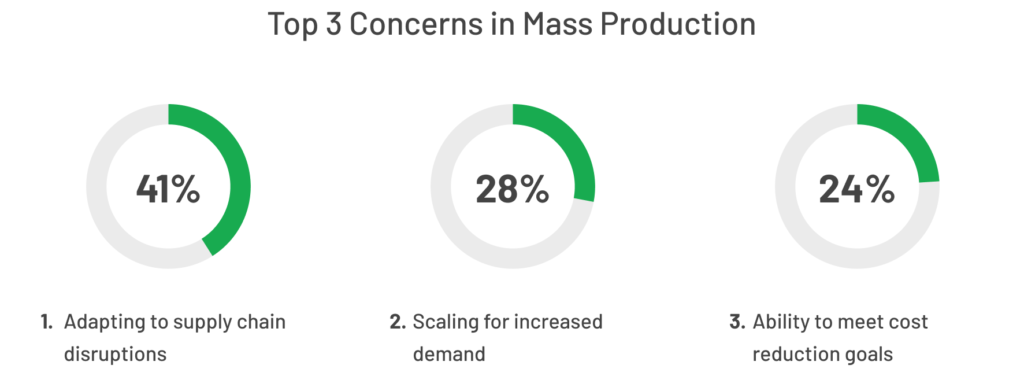
Perhaps more surprising is the fact that consumer electronics brands are noticeably less concerned about supply chain disruptions. Those in consumer electronics manufacturing cited “reduced ability to travel to the factory” as their top concern (41%), with supply chain disruptions coming in third (34%), behind ability to meet cost reduction goals (36%).
Our discussions with engineering leaders revealed a possible reason for this difference: consumer electronics companies can adapt quicker. They’re accustomed to rapid design lifecycles, which makes it that much easier to redesign for a new chip or circuit board based on supplier availability. New designs in industrial electronics and medical device manufacturing, on the other hand, are more likely to face regulations that take more time to approve.
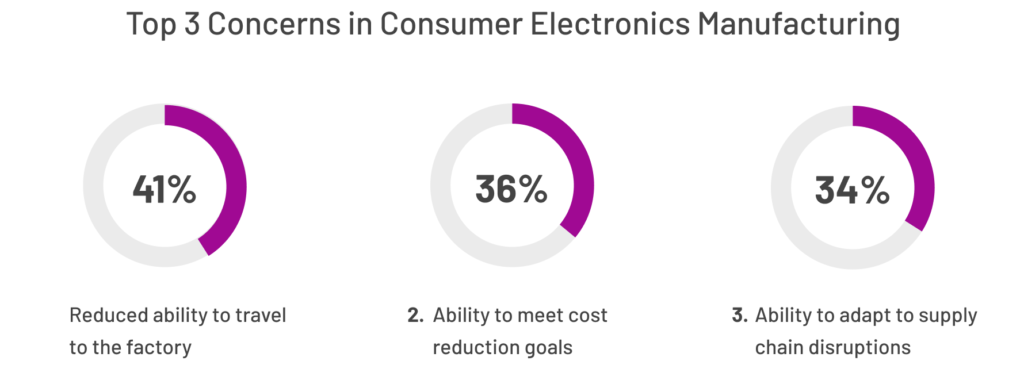
Industrial electronics companies also have a unique concern: they’re worried about their ability to hire in-region to support their programs (29%).
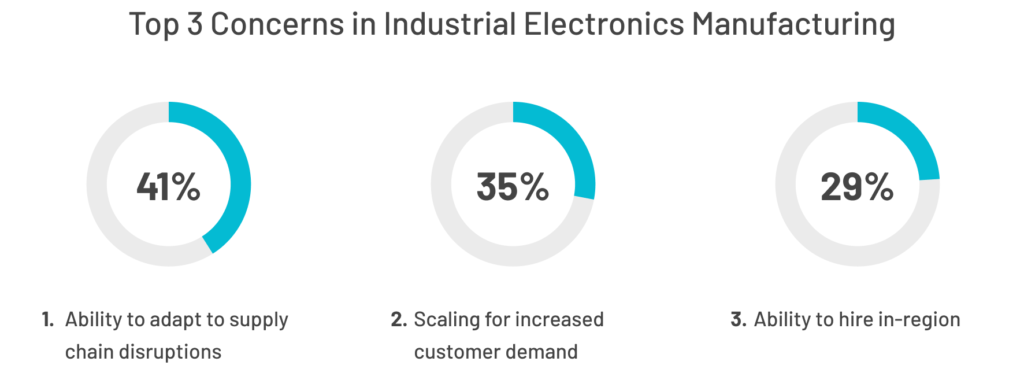
Engineering and operating teams face immense pressure during mass production. Reliability testing, failure analysis, quality control checks, meetings, reports, travel — there’s a lot on their plates.
Because the way they spend their time has a direct impact on the outcome of the project, it’s critical for them to focus on the most important tasks. Unfortunately, teams estimate they end up spending 7+ hours per week on project management alone.
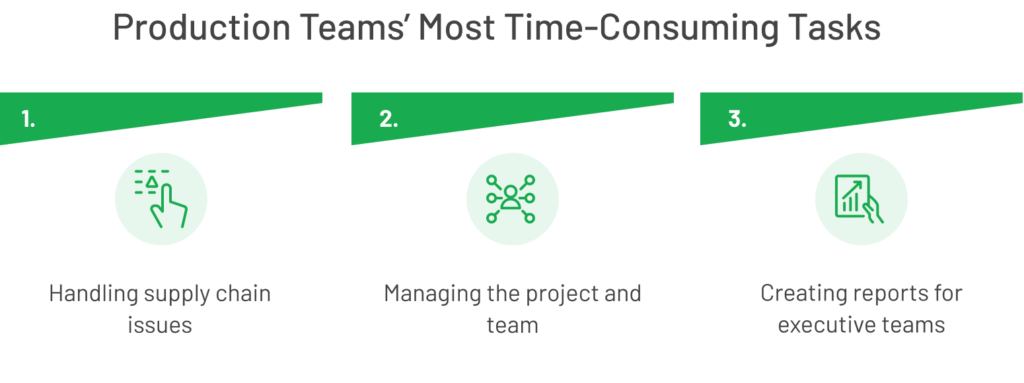
The top three production teams spend their time on include managing supply chain issues, general project management and creating reports for executive teams. Notice anything missing from that top-three list? We did, too. Making changes on the line — where changes and improvements are put into action — came in last, behind vendor meetings and even pre-2020 travel.
A company’s level of manufacturing data maturity depends on a number of factors: amount of time in production, size of the company and more. But regardless of company size, one theme came through loud and clear: the amount of time engineering and operations teams spend with data directly correlates with their satisfaction with their company’s data infrastructure.

Essentially, the less time they spend wrangling data, the more satisfied they are. One of the biggest differences showed that over 80% of those who are unsatisfied with their company’s data infrastructure rely on manual reports, whereas 48% of those who are satisfied compile manual reports. Engineers are simply more satisfied with companies that have a strong data infrastructure.
Of the many challenges that come up during mass production (MP), those challenges are accentuated during ramp. The problems that go undetected during the new product introduction (NPI) process can halt the lines, and cause product delays and team frustration.
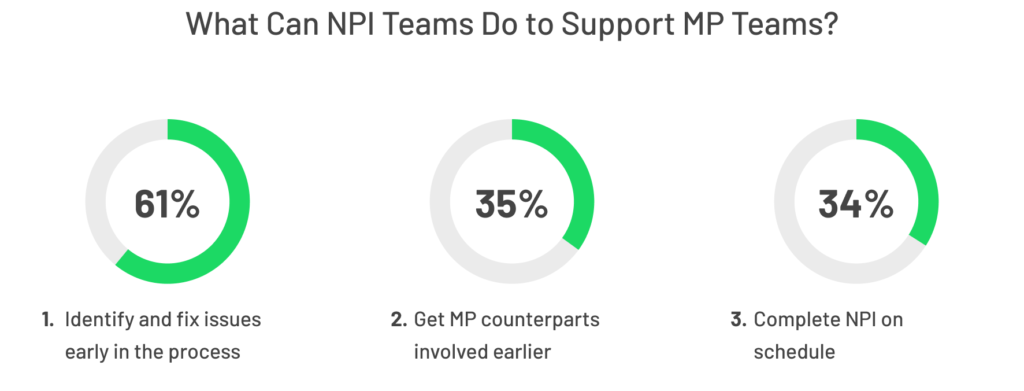
When asked what NPI counterparts could do during NPI that would help MP teams, the number one request was, unsurprisingly, to identify and fix more issues earlier in the process. That plays into the blame-game narrative perpetuated across teams as they ramp to MP.
But the second thing NPI teams could do to help MP teams shows more nuance: MP teams want to be part of the solution. They say that by getting involved earlier, they can help solve problems sooner.
The data doesn’t tell us why MP teams want to be part of the solution in NPI — whether due to lack of trust or out of a desire to support their NPI counterparts — but regardless, it’s worth understanding the cultural underpinnings of these two teams.
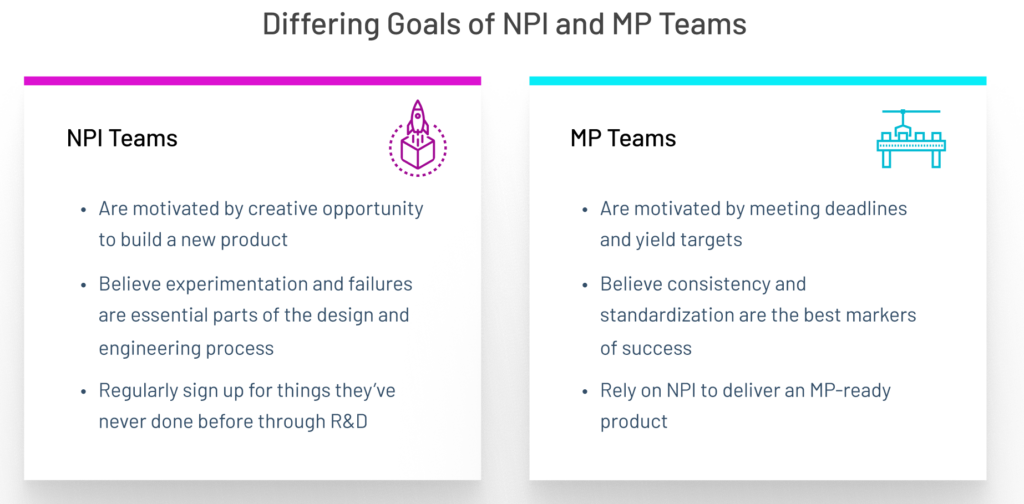
They share the same broad goal: everyone wants to launch on time and on budget. But their day-to-day work affects the way they approach problem-solving in MP.

Supply chain disruptions continue, and many engineering leaders don’t know how to empower their teams to navigate the new state of constant change, while still meeting their schedules and yield targets.
But one thing is certain — the manufacturing industry’s new future is taking shape, and data and team collaboration are critical parts of that future.
Real-time access to insights from the manufacturing line will directly impact a company’s ability to produce great products, launch on time and stay competitive in an increasingly data-centric industry. The next few years will show just how successful we can be in empowering each other to navigate the changes and continue creating innovative products.
This report is based on survey data gathered from October 2021-February 2022 from more than 300 professionals in engineering and operations in the electronics manufacturing industry. Responses were collected from consultants, individual contributors, managers, directors, VPs and C-suite leaders, and examined to inform our understanding of the trends and future of mass production.
Curious about the State of NPI? Read our research.